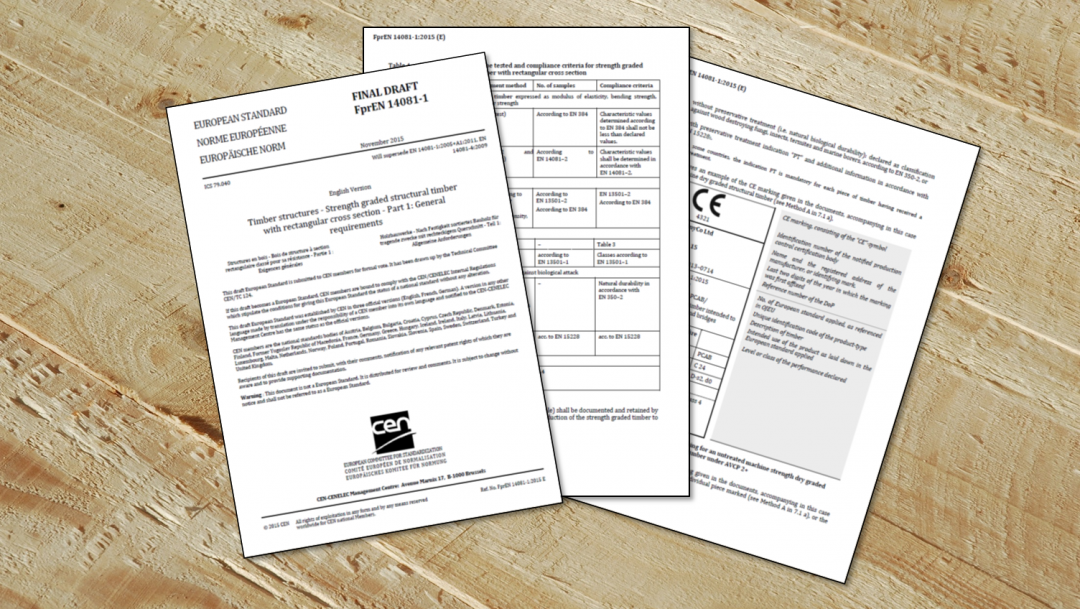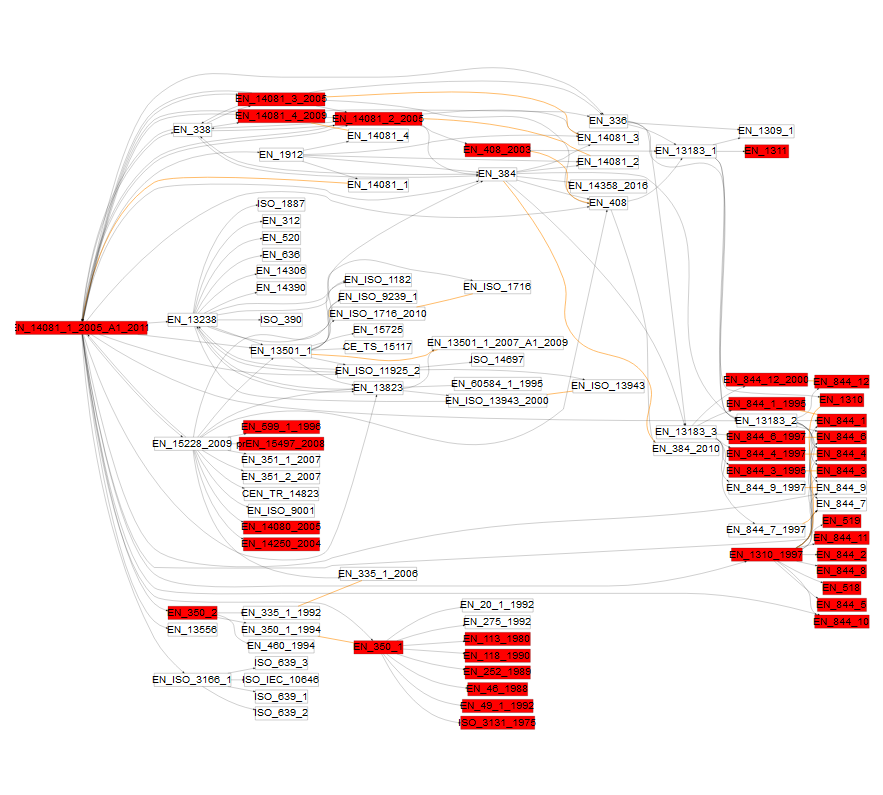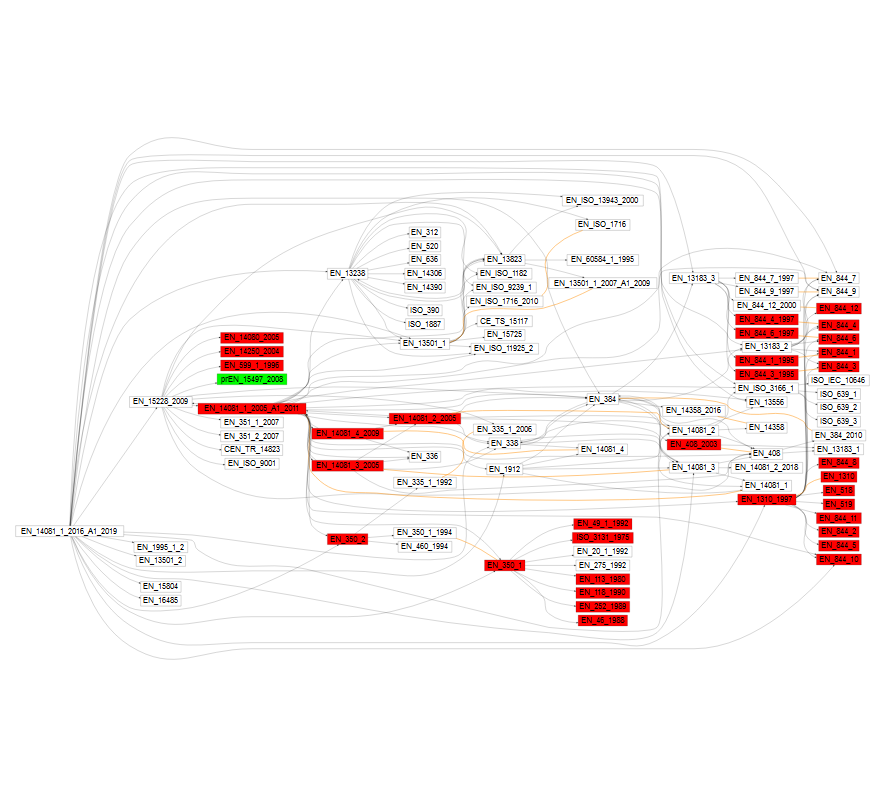
(If you want a deep dive into the general legal issues relating to harmonized standards skip to the links at the bottom)
We blogged back in 2016 about the problem that the revised standard for graded structural timber did not get cited in the OJEU (Official Journal of the European Union). CEN TC124 WG2 worked very hard to amend the standard according to the (very unclear and confusing) comments coming from the European Commission and published an amendment in 2019 (EN 14081-1:2016+A1:2019). However, EN 14081-1 remains on the list of standards not yet cited in the OJEU and it looks almost certain that the 2019 amendment won’t be either. The consequence of this is that the old, withdrawn, version is treated as the Harmonized Standard (EN 14081-1:2005+A1:2011) despite many important and useful improvements since then. CEN members (such as BSI) are obliged to publish CEN standards and withdraw the old versions which is why we end up with this problematic situation of everyone having to use a withdrawn standard.
The European Commission expects rather a lot from standards these days, and the problems in EN 14081-1:2016+A1:2019 that mean it is not cited are actually much much worse in EN 14081-1:2005+A1:2011.
This is not a specific problem for EN 14081-1, or indeed timber, although the special issues that arise from timber being a varied, and natural, material make it rather hard to resolve, compared to other materials. Nevertheless there is one huge and seemingly unsolvable problem for any future harmonized standard.
This is the EC’s new requirement for making normative references all dated and all normative reference chains dated and make sure none of these references go out of date.
One wonders how it is possible to write anything but the most simplest of standards that way. Standards are complex webs of connected standards, covered by different drafting committees, revised on different timescales, and linking into many different areas.
This stems from Harmonized Standards being treated as (somehow) part of EU law, in large part because of the James Elliott Construction legal case -but then we quickly run into the problems – exactly why this was all put into standards rather than law to begin with. Aside from questions like “can you make laws that people have to pay to read?” and “is it right that laws are written by standards committees?” … there is the huge problem that standards cannot function of standards if you a) force them to be mandatory and b) fix them in some unmodifiable state that can be picked over by lawyers in a legal case (1).
So what of EN 14081-1? What would be necessary to date all the reference chains? Even mapping this out is a seemingly endless task, but Marlene Cramer has helpfully had a go, looking at the first few levels. This is enough to see the loops that send you to more than one version of the same standard.


Is this a surprise? No of course not – anyone who has used standards knows this happens. That’s why, recently, the use of dated references was avoided where possible when writing standards. Even then you sometimes end up being sent to a standard that has been replaced by one with a different reference. This is an inevitable and unavoidable consequence of standards being living documents, always being improved to keep up with the modern world. Even if standards committees could somehow manage to collaborate enough to make a single consistent ecosystem of standards with fully correct dated cross-references, the simple fact that it is the European Commission that decides whether to cite a standard in the OJEU makes this an extra level of impossible. Because they also don’t want references to standards not cited in the OJEU!
(1) The standards are expected to be compatible with the principle of legal certainty, which (quoting Wikipedia)
“Legal certainty is now recognised as one of the general principles of European Union law and “requires that all law be sufficiently precise to allow the person – if need be, with appropriate advice – to foresee, to a degree that is reasonable in the circumstances, the consequences which a given action may entail”.[1] The principle of legal certainty, and as such the rule of law, requires that:
– laws and decisions must be made public
– laws and decisions must be definite and clear
– the decisions of courts must be regarded as binding
– the retroactivity of laws and decisions must be limited
– legitimate interests and expectations must be protected.”
Bonus content: links for deep diving into the general problems:
EC communication from November 2018 https://eur-lex.europa.eu/legal-content/EN/TXT/?uri=COM%3A2018%3A764%3AFIN
CEN CENELEC response from December 2018 https://www.cencenelec.eu/News/Policy_Opinions/PolicyOpinions/CEN-CENELEC-Response-to-EC-COM-764.pdf
Orgalim position paper on the issue from September 2019 https://www.orgalim.eu/sites/default/files/attachment/2019-09-24%20Orgalim%20Answer%20on%20the%20implementation%20of%20Regulation%20EU%201025-2012.pdf
Commentary on the James Elliott cement case https://europeanlawblog.eu/2017/09/25/the-eps-european-standards-resolution-in-the-wake-of-james-elliott-construction-carving-ever-more-holes-in-pandoras-box/
Commentary on the Global Garden lawnmower case https://europeanlawblog.eu/2019/03/07/the-butterfly-effect-of-publishing-references-to-harmonised-standards-in-the-l-series/
You could do a whole PhD on this problem. In fact, someone already did:
“Regulating European Standardisation through Law : The Interplay between Harmonised European Standards and EU Law” Medzmariashvili, Megi

Dear Daniel, thank you very much for this very good article! See also https://www.cen.eu/work/Sectors/Construction/Pages/JIS5.
Mr. Tapani Mikkeli (DG Growth) and Manfred Kohler (Team Leader Construction Products Regulation) did not allow to publish the audio files of there presentations at the conference on 4 December 2019 in Brussels. Manfred Kohler did not authorizis to publish the video of his speach on 30 October 2019 in Berlin at Symposium zur EU Bauproduktenverordnung [CPR Symposium, other videos on Youtube] either. So be prepared if you have the chance to see and hear these experts.
best regards,
Ulrich